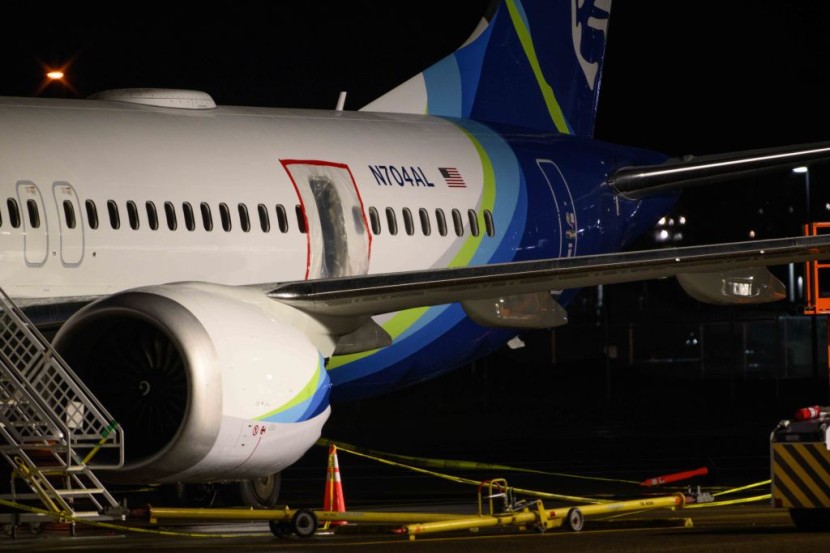Following last week's mid-air disaster, Alaska Airlines and United Airlines discovered loose components on many grounded 737 Max aircraft, which might further worsen Boeing's issues.
Loose Components
United Airlines, headquartered in Chicago, said on Monday, January 8, that it had "found instances that appear to relate to installation issues in the door plug - for example, bolts that needed additional tightening" during inspections of the 737 Max 9s. The airline promised that its technical operations team would resolve the issue and get the plane back in the air as soon as possible.
The Air Current was the first to report on United Airlines' finding, which further damaged Boeing's stocks. Spirit AeroSystems, its largest supplier, had its stock fall 11% to $28.20 as of Monday's closing, while its own stock fell 8% to $229.
This report comes after Alaska Airlines Max 9 suffered a partial fuselage collapse at an altitude of 16,000 feet on a route from Oregon to California. None of the 171 passengers or six crew members were hurt in the incident.
Early findings from Alaska Airlines' technicians show that there is also some loose hardware on certain planes. Official inspections will not begin until the airline receives the necessary paperwork from Boeing and the United States Federal Aviation Administration (FAA), according to the airline.
The most recent incident involving a blowout in a flight at Alaska Airlines has led to the suspension of 171 Boeing 737 Max 9 aircraft. Around 22% of flights have reportedly been canceled.
On Monday, representatives from the National Transportation Safety Board (NTSB) held a news conference to announce that the four bolts meant to secure the plug in place had not been located. Engineer Clint Crookshanks of the agency said they are still trying to figure out if the bolts existed. He went on to say that this will be resolved by laboratory testing in Washington.
"If the bolts are there, it prevents the door from translating upwards and disengaging . . . and flying off the plane. However, the bolts can break or any number of things [can happen] which we have to look at," he stated, as reported by the Financial Times.

Also Read: Alaska Airlines Boeing 737 Max 9 Blowout Update: Over 170 Airplanes Suspended
Facing Criticisms
Boeing considered replacing the 737 with a new plane over a decade ago. Boeing chose to simplify the 737 by making modest changes, resulting in the birth of the Max series. This was expected to prevent falling behind competitor Airbus in sales.
Lion Air and Ethiopian Airlines Max 8s crashed in 2018 and 2019, respectively. Regulators worldwide suspended the planes for nearly two years as Boeing upgraded a disaster-related automated flight control system.
Boeing's intentions for rushing Max clearance with scant pilot training were questioned by Congress and federal prosecutors. In 2021, Boeing paid $2.5 billion, which included a $244 million fine, as part of a criminal settlement.
Also Read: Alaska Airlines, Federal Officials Ground Boeing 737 Max 9 Planes Following Mid-Air Section Blowout
© 2025 HNGN, All rights reserved. Do not reproduce without permission.








